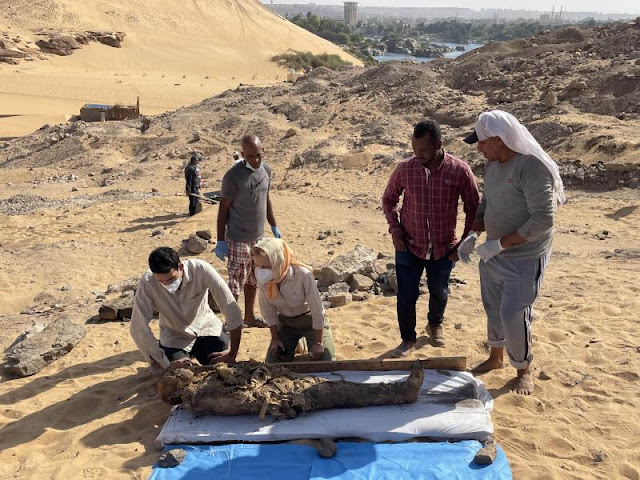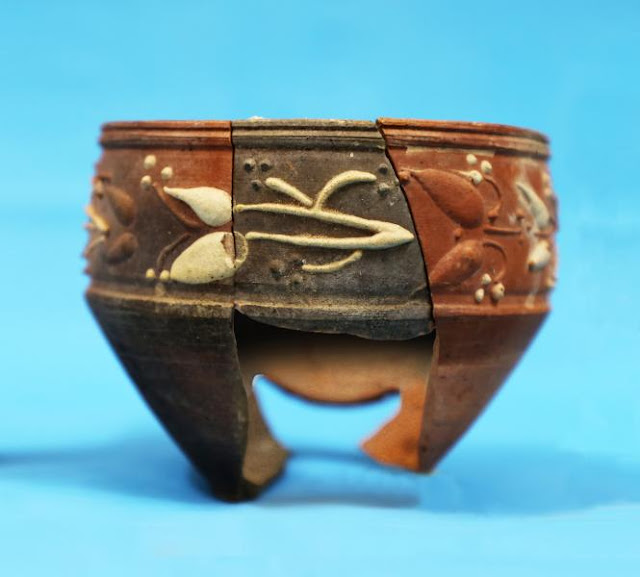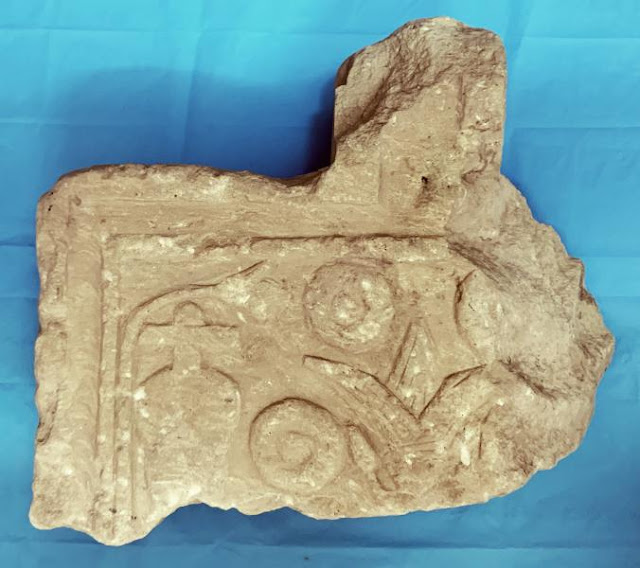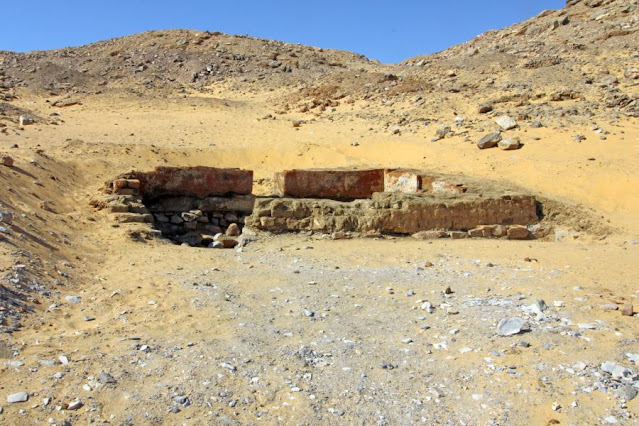Tomb with Greek Mummy Unearthed in Aswan, Egypt

A Greco-Roman-era tomb with a Greek mummy was unearthed recently in Aswan, Egypt. And in an extremely unusual discovery, the archaeologists found a copper plaque with the man's name — Nikostratos — near his body.
The amazing find was made as part of excavations undertaken by the Egyptian-Italian Mission at West Aswan, in the area of the Aga Khan Mausoleum, as reported by the University of Milan on Monday.
Although the tomb complex had been raided in antiquity, the mummy of the Greek man was intact, with grave goods such as elaborate pottery found with the body. An altar for sacrifices was found at the entrance of the tomb, which contained a total of 20 mummies.

Greek man Nikostratos had been buried with copper necklace with name on it
The tomb, which the archaeologists say in an announcement was "very large," is part of the Aga Kham Mausoleum complex but had been previously unknown to historians.
The archaeological mission that took place in 2021 was directed by Patrizia Piacentini, Professor of Egyptology and Egyptian Archaeology at the State University of Milan, and Abdelmoneim Said, the Director General of Aswan and Nubia Antiquities (SCA).
The incredible discovery was made during the digs that took place between May and October of 2021.

Greek mummy, funeral goods, altar found in new tomb complex in Egypt
The joint Italian-Egyptian team has been working since 2019 in the area surrounding the Mausoleum of the Aga Khan, on the western shore of the Nile at Aswan, where there are more than 300 tombs dating from the sixth century BC to the fourth century AD.
This encompasses the Ptolemaic era of Egyptian history, when the Egyptian royals intermarried with the Greek Ptolemies, the rulers who took over parts of Alexander the Great's conquered lands.
Archaeologists found the mummy of a man adjacent to the east wall of the structure; next to it, they discovered a copper necklace with an engraved plaque in Greek with his name, "Nikostratos." They believe that his body had originally been in the tomb that had been uncovered soon afterward under the rectangular structure and later taken out by looters in ancient times.

Unique "rectangular structure" protected tomb of Greek mummy in Egypt for many centuries
Their latest find is a large tomb (designated AGH032) dating from the Greco-Roman period, was hidden by a well-preserved rectangular structure that shows important traces of a mysterious fire that the archaeologists believe also affected the burial site.
A large pile containing animal bones (mainly those of sheep), as well as pottery shards, offering plates and slabs inscribed in hieroglyphics covered the east wall of the structure, suggesting its use as a votive site, the archaeologists state in their report, which was released by the University of Milan.
The archaeologists declared that this is the first structure of its kind found in the Aga Khan necropolis.

Mummy's wrappings slashed by grave robbers in antiquity; knife found at scene
A staircase partially flanked by carved blocks and covered by a mud-brick vault leads to the entrance, which was enclosed by a complex system of slabs and stone blocks above the staircase. A large offering table, or altar, was found in pieces at the entrance; hieroglyphics are still clearly visible on its surface.
A heavily-decorated bowl decorated "à la barbotine", or with ceramic slip decoration applied before firing, was found, also in fragments, in the newly-discovered tomb as part of the grave goods of the departed.
The tomb complex is comprised of a hall overlooked by four burial chambers carved deep into the bedrock. In the hall, opposite the entrance, an earthenware sarcophagus containing the mummy of a child and a beautiful cartonnage (a kind of decorated papier-mâché that covered the mummies) was discovered by the archaeologists.
Another child's mummy, found in one of the burial chambers, has been X-rayed and shows a plaque atop the chest of the deceased.
Archaeologists found the 20 mummies, some in what they called "an exceptional state of preservation," inside the four galleries carved into the rock. Others had had their wrappings and cartonnage slashed by ancient thieves; in yet another astounding discovery, the researchers found a knife amongst the mummies that they believe was used for this purpose.
Well-reserved sarcophagi still had brightly-painted colors
Some of the mummified bodies were of elderly people, as evidenced by the visible signs of arthritis in their bones; others were of women or small children, including an infant.
A radiological analysis of the head of a mummified child was performed on the site of the necropolis with a portable X-ray machine by members of the Egyptian-Italian Mission at West Aswan.
They also carried out anthropological and radiological analyses on 45 individuals that had been discovered in 2019 in the tomb called AGH026 in addition to the 20 individuals found in 2021 in tomb AGH032. (See video below).
The aim was to assess age, sex and possible diseases t he people may have suffered from.
The team discovered that in tomb AGH026, 30% of the individuals were children, from the neonatal period to an age of about 10 years. Many of the remaining bodies were female. At least three families were found, with mother, father and son buried next to each other in one case.
Analyses of the bones showed that some of the people had suffered from infectious diseases and various metabolic disorders. The femur of one adult showed clear signs of amputation, which the person must have survived since there is evidence of the bone self-repairing after the event, the archaeologists note.
Other bodies show evidence of arthrosis, which is a sign of death that had taken place in old age.
The initial survey of the area led to the discovery of several well-preserved sarcophagi, made of stone and clay, dating from the Late Pharaonic to the Roman period, with some of them still showing beautiful colors, the archaeologists say. Two sarcophagi of children and three of adults, together with parts of other sarcophagi, were collected from the site and have been secured offsite.

See all the latest news from Greece and the world at Greekreporter.com. Contact our newsroom to report an update or send your story, photos and videos. Follow GR on Google News and subscribe here to our daily email!
-- Sent from my Linux system.
No comments:
Post a Comment